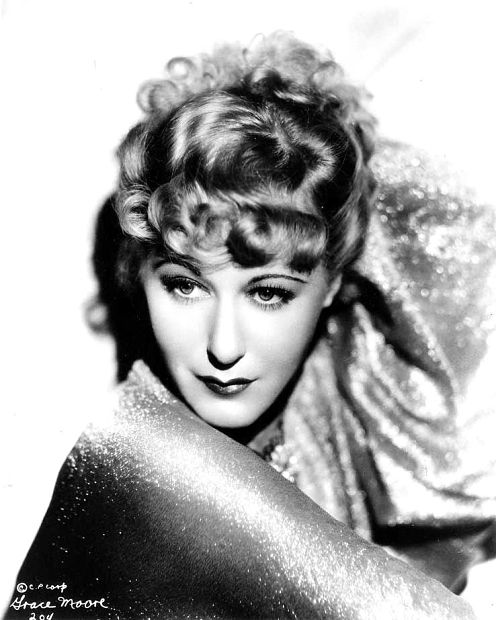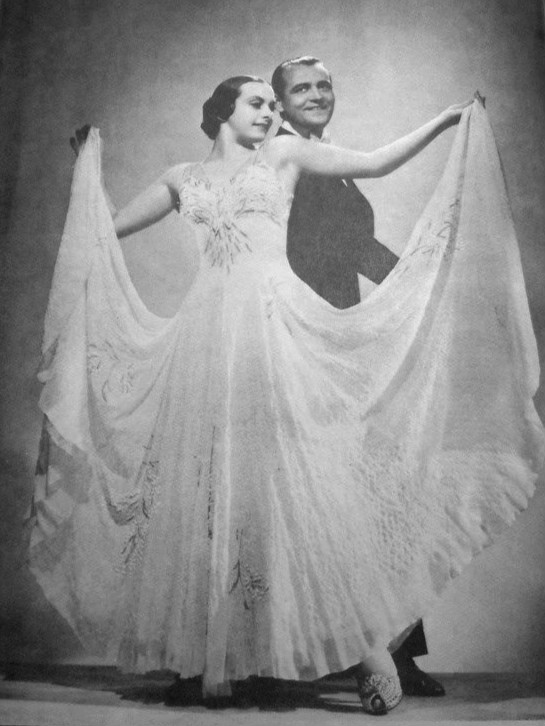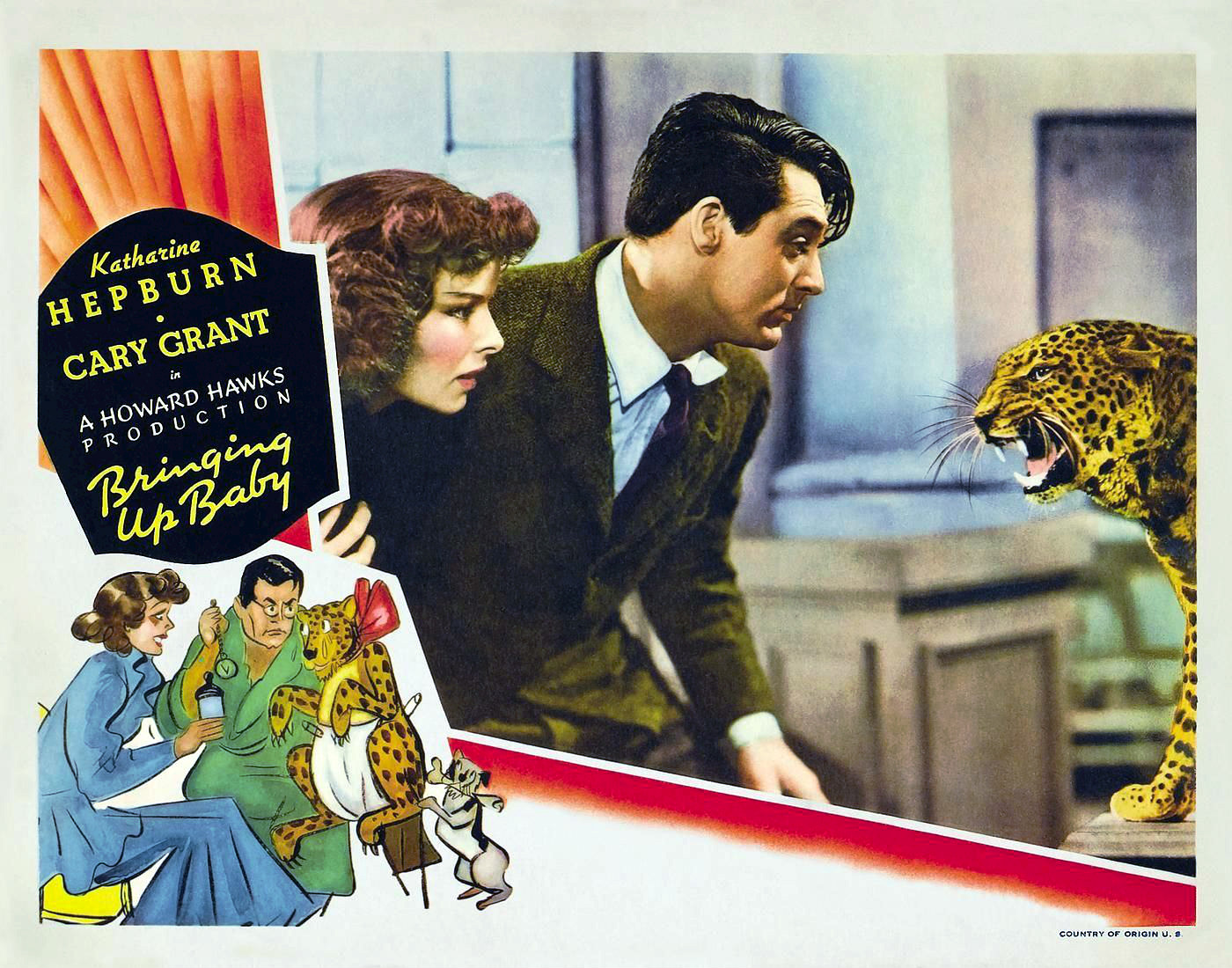|
Champagne Waltz
''Champagne Waltz'' is a 1937 American comedy film directed by A. Edward Sutherland and starring Gladys Swarthout, Fred MacMurray and Jack Oakie. It is one of five movies produced by Paramount in the 1930s featuring Swarthout, a very popular Metropolitan Opera mezzo-soprano. The studio was attempting to build on the popularity of Grace Moore, another opera singer, who had also expanded her talents into movies. The film's sets were designed by the art director Ernst Fegté working with Hans Dreier. The costume designer was Travis Banton. Production This is a light musical with elements of screwball comedy. It documents the rivalry between a Vienna Waltz studio and the American jazz band that moves in next door. Franz Strauss is stressed because his waltz palace is losing business to the jazz club. Fred MacMurray is the trumpet-playing headliner. He pretends to be the US Consul when he encounters Swarthout, the daughter of the waltz studio owner. He changes the story to be an ... [...More Info...] [...Related Items...] OR: [Wikipedia] [Google] [Baidu] |
|
 |
Harlan Thompson
Harlan Thompson (24 September 1890 – 29 October 1966) was an American theatre director, screenwriter, lyricist, film director, and film and television producer. He wrote the Broadway hit ''Little Jessie James'' (1923–24), and several other Broadway musicals. He moved to Hollywood, where he was in turn a writer, director and producer. Career Harlan Thompson was born in Hannibal, Missouri, on 24 September 1890. He went to high school in Kansas City, Missouri, and then attended the University of Kansas. He studied chemical engineering. Thompson became a reporter and editor for ''The Kansas City Star'' and ''Kansas City Post''. During World War I (1914–18) he was in the 167th Aero Squadron of the American Expeditionary Forces. After the war he worked for the ''New York World''. Broadway In 1923 Harlan Thompson wrote the book and lyrics for the musical comedy ''Little Jessie James'', with music by Harry Archer. It was staged by Walter Brooks and produced by L. Lawrence ... [...More Info...] [...Related Items...] OR: [Wikipedia] [Google] [Baidu] |
 |
Grace Moore
Mary Willie Grace Moore (December 5, 1898January 26, 1947) was an American operatic soprano and actress in musical theatre and film.Obituary '' Variety'', January 29, 1947, page 48. She was nicknamed the "Tennessee Nightingale." Her films helped to popularize opera by bringing it to a larger audience. She was nominated for the Academy Award for Best Actress for her performance in '' One Night of Love''. In 1947, Moore died in a plane crash at the age of 48. She published an autobiography in 1944 titled ''You're Only Human Once''. In 1953, a film about her life was released titled ''So This Is Love'' starring Kathryn Grayson. Early life Moore was born Mary Willie Grace Moore, the daughter of Tessa Jane (née Stokely) and Richard Lawson Moore. She was born in the community of Slabtown (now considered part of Del Rio) in Cocke County, Tennessee. By the time she was two years old, her family had relocated to Knoxville, a move Moore later described as traumatic, as she found ur ... [...More Info...] [...Related Items...] OR: [Wikipedia] [Google] [Baidu] |
|
Herman Bing
Herman Bing (March 30, 1889 – January 9, 1947) was a German-American character actor. He acted in more than 120 films and many of his parts were uncredited. Biography Bing was born in Frankfurt am Main, Germany. He was son of the opera singer Max Bing (1865-1919) and Frieda Seckback (1869-1939), and brother of actor Gustav Bing (1893-1967), Clara Bing (1895-1976), and Erna Bing Swarzchild. He was married to Carla Lichtenstein and had one daughter. Bing began his career at the circus, at age 16, and vaudeville showing comedic talent. In 1921 he made his film debut in "Ciska Barna, die Zigeunerin". He was production chief of several films in Germany before he went to America, in 1923, with director Friedrich Wilhelm Murnau as Murnau's interpreter and assistant director. He also worked under John Ford and Frank Borzage, before establishing himself as a successful character actor well known for his wild-eyed facial expressions and thick German accent. He provided the vo ... [...More Info...] [...Related Items...] OR: [Wikipedia] [Google] [Baidu] |
|
 |
Yolanda Casazza
Frank Veloz (1906–1981) and Yolanda Casazza (1908–1995) were a self-taught American ballroom dance team, husband and wife, who became stars in the 1930s and 1940s, and were among the highest paid dance acts during that era. They performed on stage in productions such as ''Hot-Cha!'', which ran for 119 shows on Broadway in 1932. They also appeared in popular films such as ''Under the Pampas Moon'' (1935), ''The Pride of the Yankees'' (1942), ''Honeymoon Lodge'' (1943), ''Brazil'' (1944) and '' The Thrill of Brazil'' (1946), the latter of which is credited as being of major importance to the growth in popularity of Samba in America. Veloz and Yolanda specialized in Latin ballroom dance styles, and opened their own chain of dance studios, where many middle-class people learned the art of ballroom dancing. The studios closed down in the mid-1950s as new forms of dance became popular. Veloz and Yolanda did much to legitimize ballroom dance as a performance art and invented the "Cob ... [...More Info...] [...Related Items...] OR: [Wikipedia] [Google] [Baidu] |
|
Viennese Waltz
Viennese waltz (german: Wiener Walzer) is a genre of ballroom dance. At least four different meanings are recognized. In the historically first sense, the name may refer to several versions of the waltz, including the earliest waltzes done in ballroom dancing, danced to the music of Viennese waltz. What is now called the Viennese waltz is the original form of the waltz. It was the first ballroom dance performed in the closed hold or "waltz" position. The dance that is popularly known as the waltz is actually the English or slow waltz, danced at approximately 90 beats per minute with 3 beats to the bar (the international standard of 30 measures per minute), while the Viennese waltz is danced at about 180 beats (58-60 measures) per minute. To this day however, in Germany, Austria, Scandinavia, and France, the words (German), (Danish, Norwegian, and Swedish), and (French) still implicitly refer to the original dance and not the slow waltz. The Viennese waltz is a rotary dan ... [...More Info...] [...Related Items...] OR: [Wikipedia] [Google] [Baidu] |
|
 |
Jazz
Jazz is a music genre that originated in the African-American communities of New Orleans, Louisiana in the late 19th and early 20th centuries, with its roots in blues and ragtime. Since the 1920s Jazz Age, it has been recognized as a major form of musical expression in traditional and popular music. Jazz is characterized by swing and blue notes, complex chords, call and response vocals, polyrhythms and improvisation. Jazz has roots in European harmony and African rhythmic rituals. As jazz spread around the world, it drew on national, regional, and local musical cultures, which gave rise to different styles. New Orleans jazz began in the early 1910s, combining earlier brass band marches, French quadrilles, biguine, ragtime and blues with collective polyphonic improvisation. But jazz did not begin as a single musical tradition in New Orleans or elsewhere. In the 1930s, arranged dance-oriented swing big bands, Kansas City jazz (a hard-swinging, bluesy, improvisationa ... [...More Info...] [...Related Items...] OR: [Wikipedia] [Google] [Baidu] |
 |
Time (magazine)
''Time'' (stylized in all caps) is an American news magazine based in New York City. For nearly a century, it was published Weekly newspaper, weekly, but starting in March 2020 it transitioned to every other week. It was first published in New York City on March 3, 1923, and for many years it was run by its influential co-founder, Henry Luce. A European edition (''Time Europe'', formerly known as ''Time Atlantic'') is published in London and also covers the Middle East, Africa, and, since 2003, Latin America. An Asian edition (''Time Asia'') is based in Hong Kong. The South Pacific edition, which covers Australia, New Zealand, and the Pacific Islands, is based in Sydney. Since 2018, ''Time'' has been published by Time USA, LLC, owned by Marc Benioff, who acquired it from Meredith Corporation. History ''Time'' has been based in New York City since its first issue published on March 3, 1923, by Briton Hadden and Henry Luce. It was the first weekly news magazine in the United St ... [...More Info...] [...Related Items...] OR: [Wikipedia] [Google] [Baidu] |
 |
Screwball Comedy
Screwball comedy is a subgenre of the romantic comedy genre that became popular during the Great Depression, beginning in the early 1930s and thriving until the early 1940s, that satirizes the traditional love story. It has secondary characteristics similar to film noir, distinguished by a female character who dominates the relationship with the male central character, whose masculinity is challenged. The two engage in a humorous battle of the sexes, which was a new theme for Hollywood and audiences at the time. The genre also featured romantic attachments between members of different social classes, as in ''It Happened One Night'' (1934) and '' My Man Godfrey'' (1936). What sets the screwball comedy apart from the generic romantic comedy is that "screwball comedy puts the emphasis on a funny spoofing of love, while the more traditional romantic comedy ultimately accents love". Other elements of the screwball comedy include fast-paced, overlapping repartee, farcical situatio ... [...More Info...] [...Related Items...] OR: [Wikipedia] [Google] [Baidu] |
_(5851926969).jpg) |
Travis Banton
Travis Banton (August 18, 1894 – February 2, 1958) was an American costume designer. He is perhaps best known for his long collaboration with actress Marlene Dietrich and director Josef von Sternberg. He is generally considered one of the most important Hollywood costume designers of the golden age. Born in Waco, Texas, Banton moved to New York City as a child. He was educated at Columbia University and at the Art Students League of New York, where he studied art and fashion design. An early apprenticeship with a high-society costume dressmaker earned him fame. When Mary Pickford selected one of his dresses for her wedding to Douglas Fairbanks, his reputation was established. He opened his dressmaking salon in New York City, and soon was asked to create costumes for the Ziegfeld Follies. In 1924, Banton moved to Hollywood when Paramount contracted with him to create costumes for his first film, ''The Dressmaker from Paris''. Beginning with Norma Talmadge in '' Poppy'', ... [...More Info...] [...Related Items...] OR: [Wikipedia] [Google] [Baidu] |
|
Costume Designer
A costume designer is a person who designs costumes for a film, stage production or television show. The role of the costume designer is to create the characters' outfits or costumes and balance the scenes with texture and colour, etc. The costume designer works alongside the director, scenic, lighting designer, sound designer, and other creative personnel. The costume designer may also collaborate with a hair stylist, wig master, or makeup artist. In European theatre, the role is different, as the theatre designer usually designs both costume and scenic elements. Designers typically seek to enhance a character's personality, and to create an evolving plot of color, changing social status, or period through the visual design of garments and accessories. They may distort or enhance the body—within the boundaries of the director's vision. The designer must ensure that the designs let the actor move as the role requires. The actor must execute the director's blocking of the produ ... [...More Info...] [...Related Items...] OR: [Wikipedia] [Google] [Baidu] |
|
|
Hans Dreier
Hans Dreier (August 21, 1885 – October 24, 1966) was a German motion picture art director. He was Paramount Pictures' supervising art director from 1927 until his retirement in 1950, when he was succeeded by Hal Pereira. Hans Dreier was born in Bremen, Germany in 1885. After studying architecture in Munich, Germany, Dreier worked as imperial supervising architect of the German Cameroon. During World War I, he served in the German Lancers. He began his career in German films in 1919 as an assistant designer at UFA Studios. At the urging of German director Ernst Lubitsch, Dreier relocated to Hollywood in 1923 to work for Paramount. His first Hollywood film was ''Forbidden Paradise'', directed by Lubitsch and starring Pola Negri. Dreier worked as Paramount's supervising art director from 1927 until his retirement in 1950. He made contributions to nearly 500 films during his career, including many films directed by Josef von Sternberg and Ernst Lubitsch, as well as the ... [...More Info...] [...Related Items...] OR: [Wikipedia] [Google] [Baidu] |